I. Electromagnetism
II. Strong Force
III. Weak Force
IV. Gravity
V. Unity
Fundamental Interactions is an immersive audio-visual experience that it is the last part of the cycle of performances called Consciousness: A String Theory Symphony
Through a fusion of sound and video, this performance examines the four fundamental forces—electromagnetic,strong, weak, and gravitational—that govern and balance the structure of the universe. These forces are responsible for all observable physical phenomena and interactions between particles.
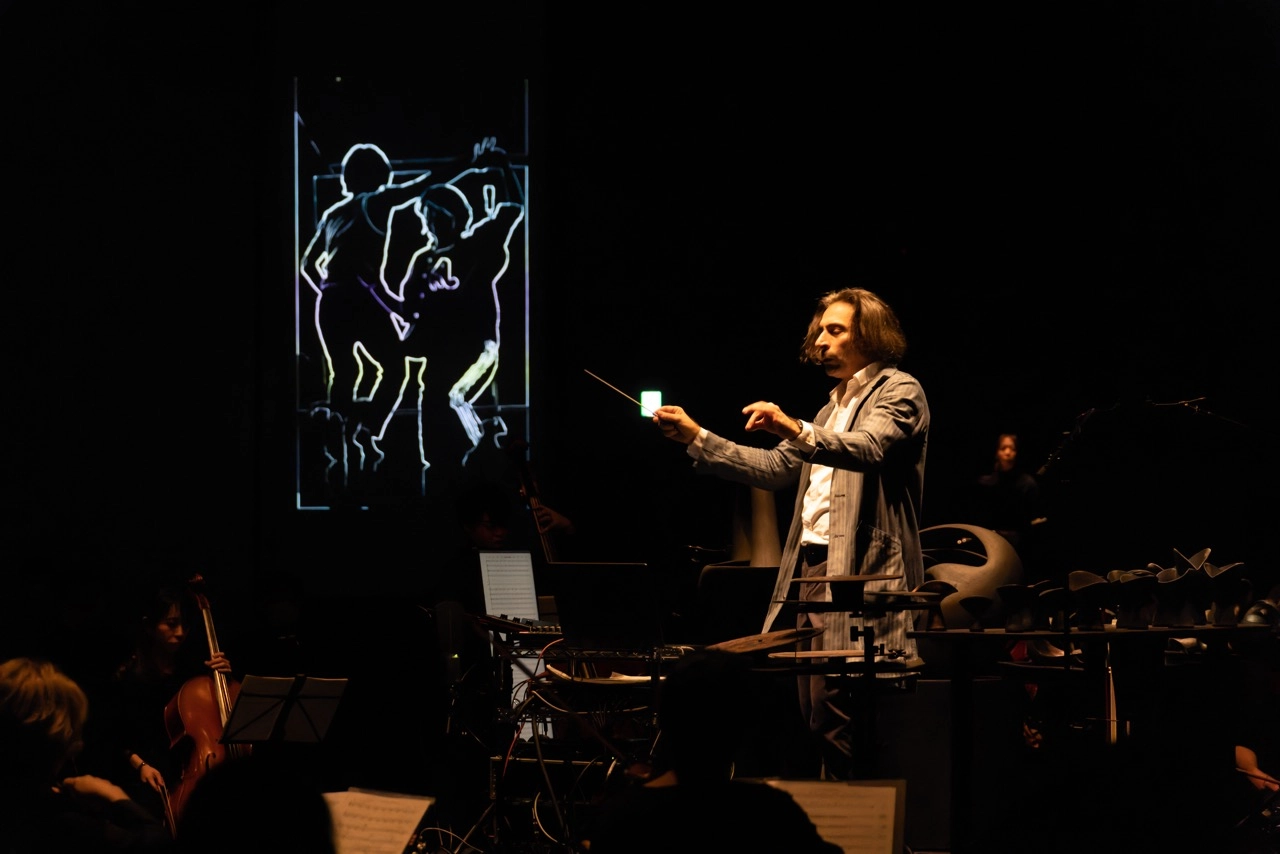
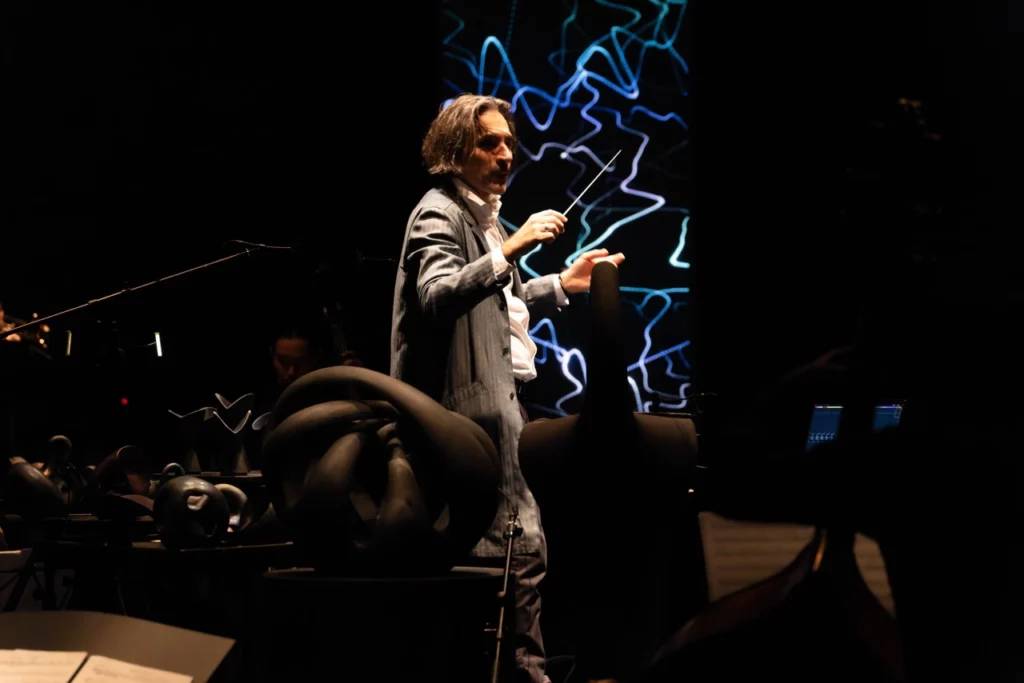
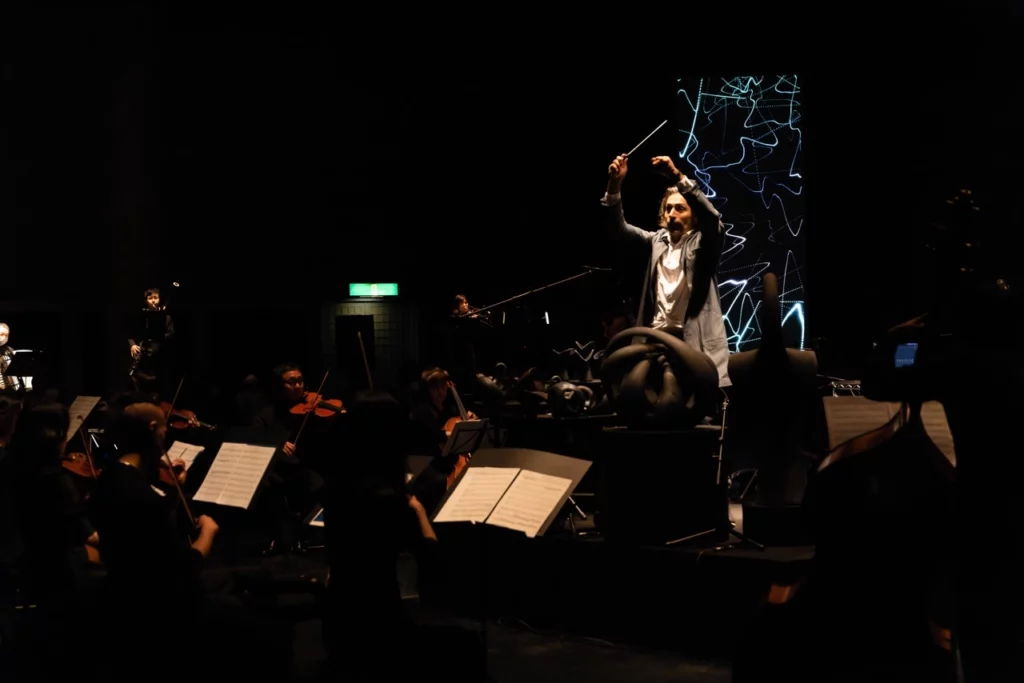
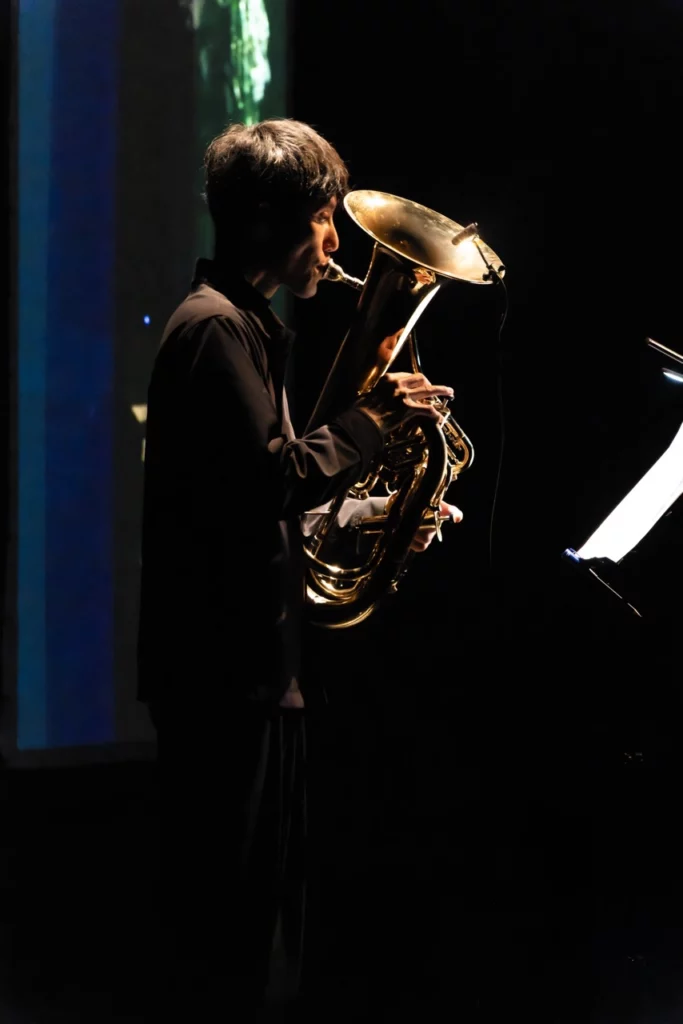
Why do these four forces exist in the universe? While we do not yet know all the answers, this performance invites reflection on the mystery of these fundamental forces at the microscopic scale. Are they genuinely distinct, or could they be unified? Are we moving toward a “theory of everything”? Perhaps if the fundamental particles mediating these forces are linked, they might resemble “strings.” The day may come when the true origin of these interactions is understood.
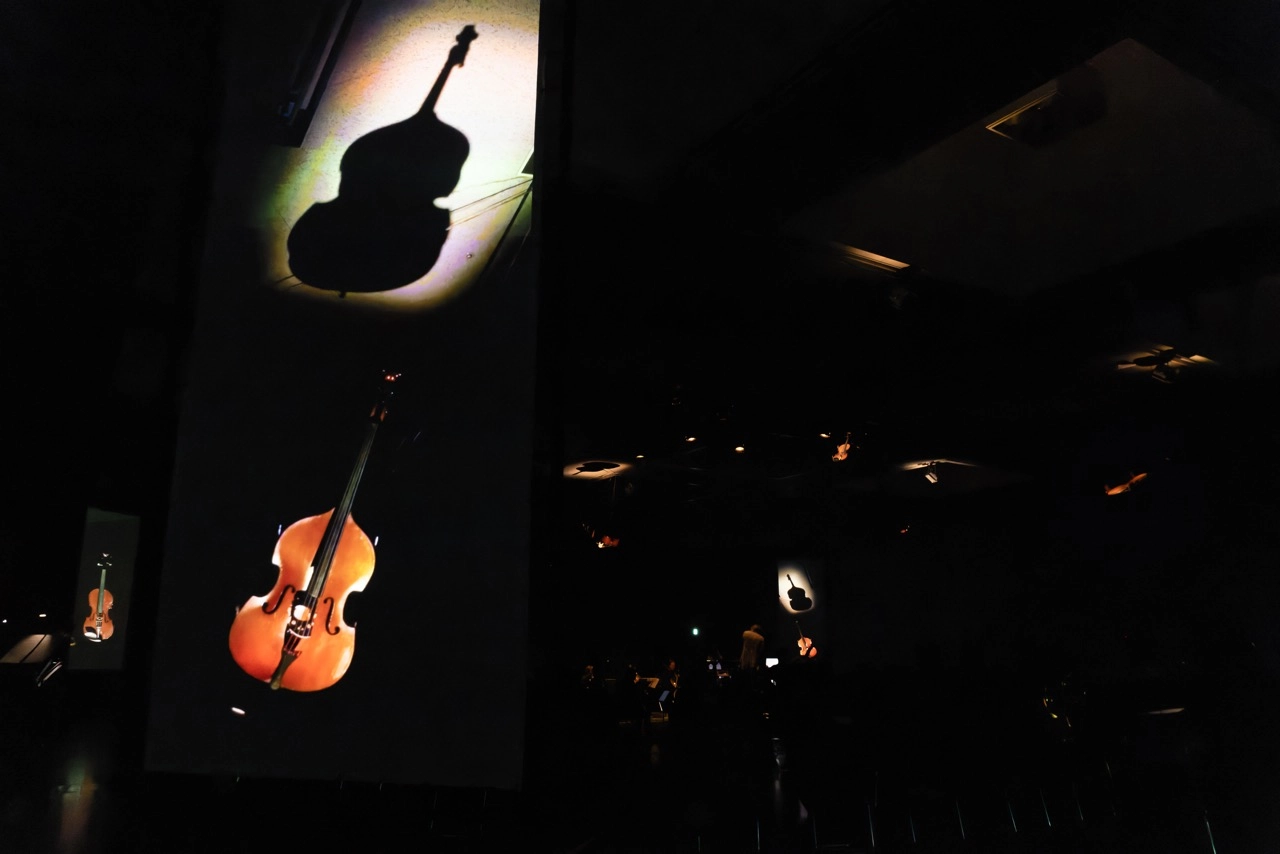
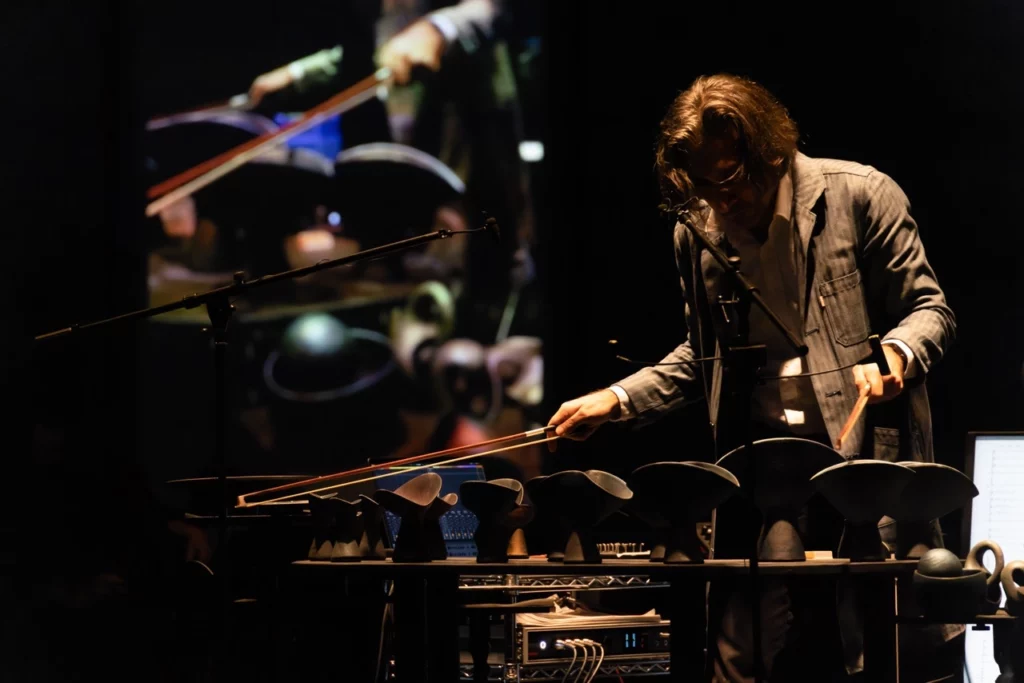
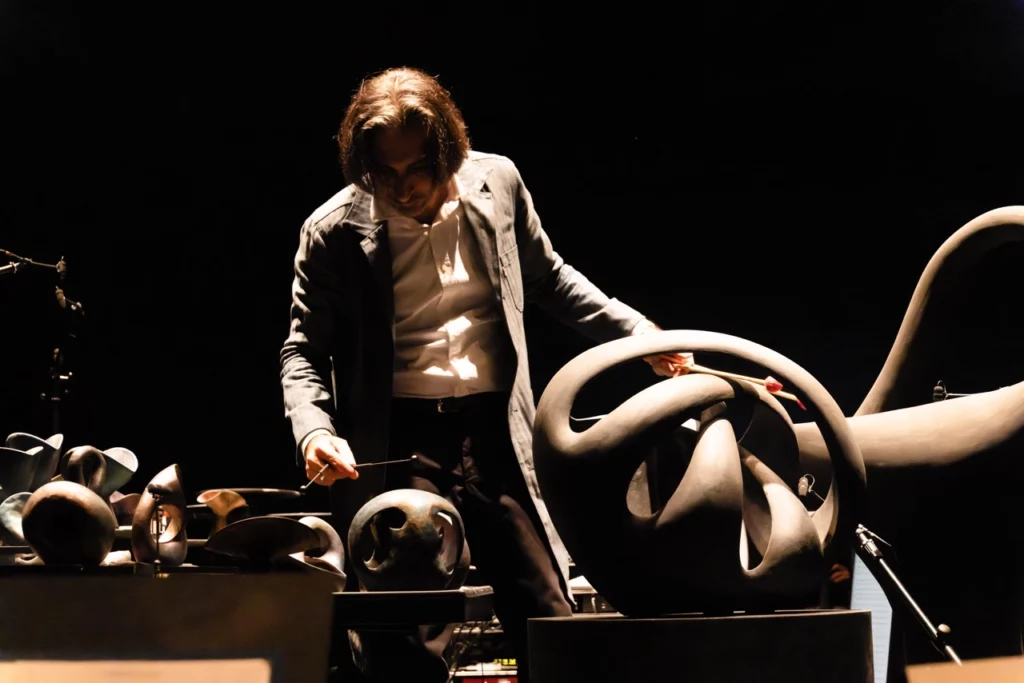
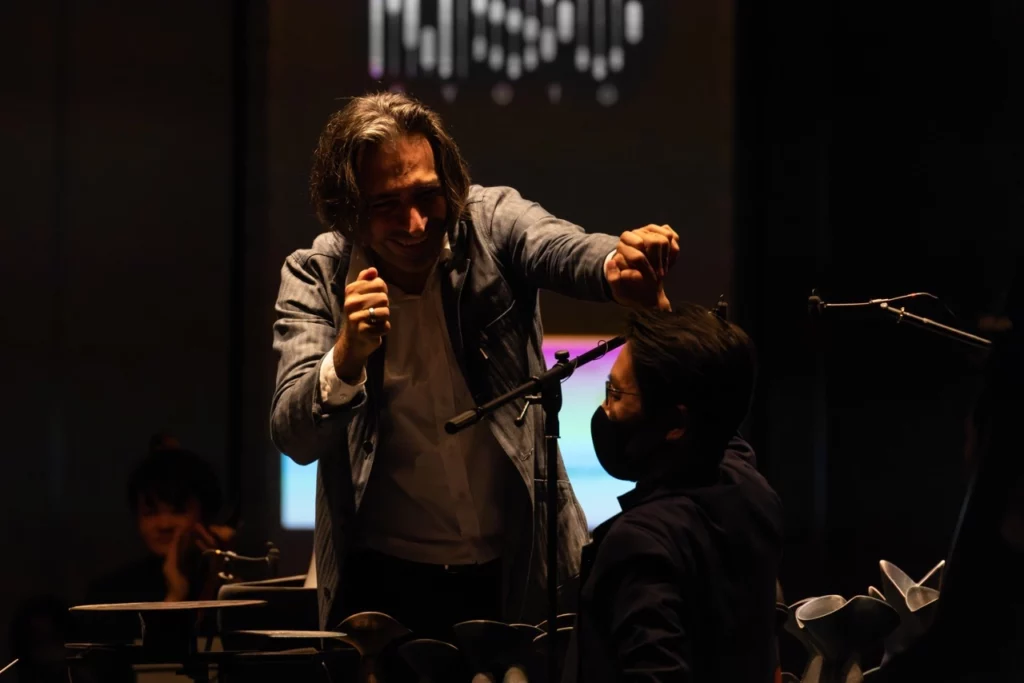
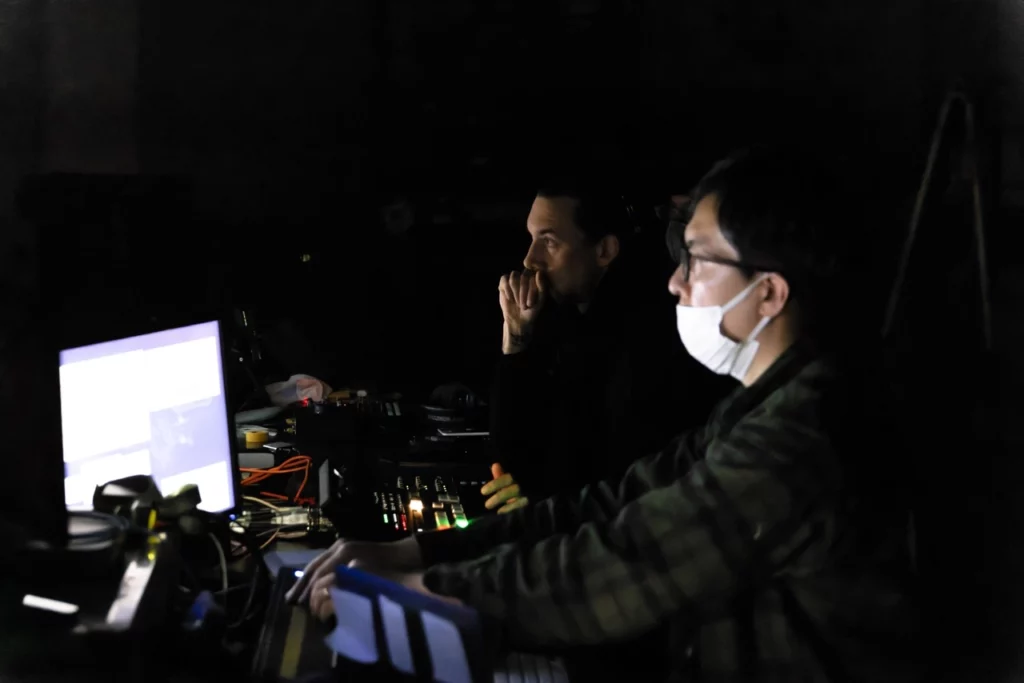
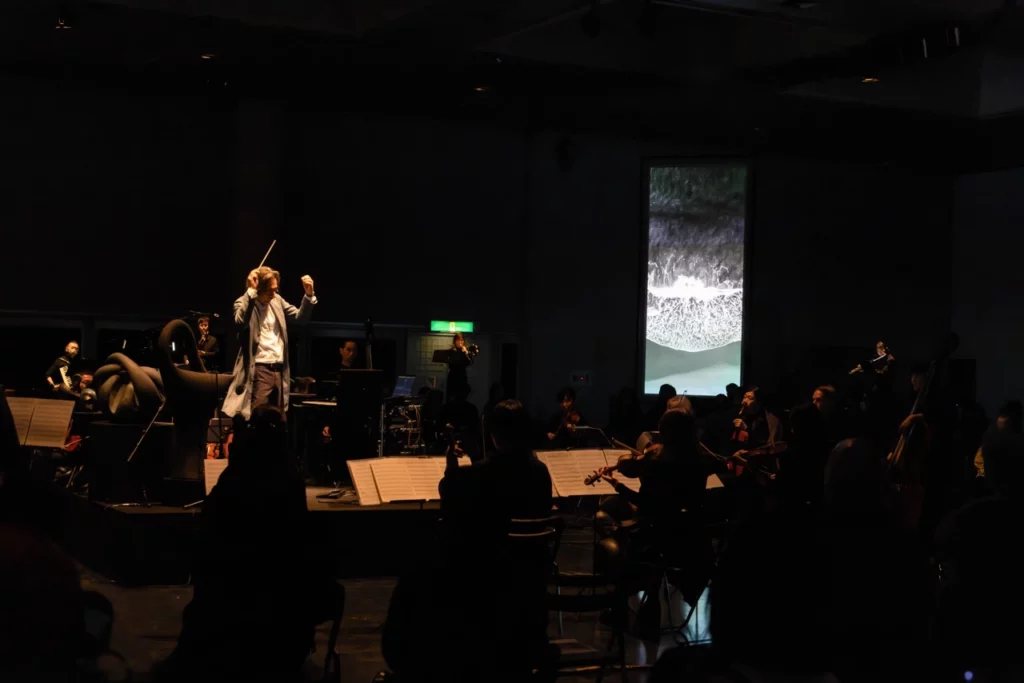
The concert begins with the crackling of radio waves from an old receiver. They are electromagnetic waves. They surround us and they are invisible. The music then drives us to a subatomic scale…
In physics, fundamental forces are associated with elementary mediator particles known as gauge bosons which are also musically transcripted in the score.
Photons transmit the electromagnetic force, gluons the strong interaction, W and Z bosons the weak interaction, and the graviton (not yet detected) is thought to mediate gravity.
On stage, reflecting on each force, the orchestra is divided into four ensembles. Each of them includes woodwinds, brass, percussion and strings. Their arrangement in the concert hall follows a principle of symmetry – an essential concept in particle physics – each instrument has a counterpart in a symmetrical and opposite position.
Similar to the orchestra, the four screens are also displayed symmetrically. They reflect different aspects of the fundamental forces. These screens blend filmed images of physical and natural phenomena, with real-time visuals—an ensemble of audio-reactive virtual particles.
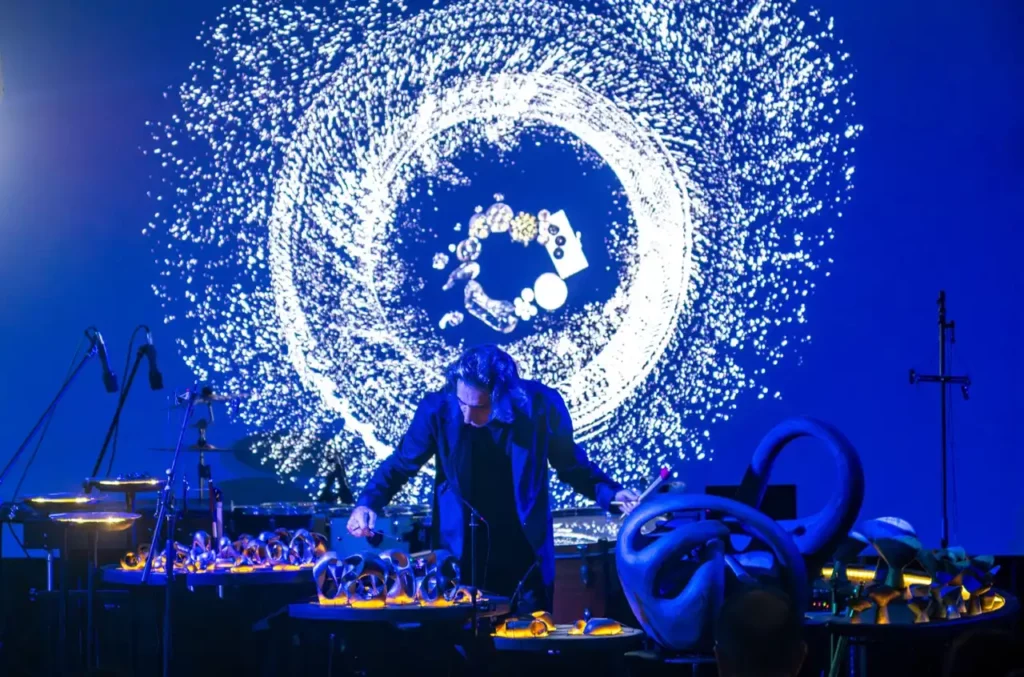
At the center of the stage, a unique element of the orchestra is the ceramophone. This instrument created by Kurokawa, is entirely made of ceramic sculptures and is the culmination of extensive research on matter and sound. It is especially associated with the Strong force (second movement), a fundamental interaction that acts between subatomic particles of matter.
The score of Fundamental Interactions is, most of the time, written. Except in the third movement, Paget develops small musical motifs and assembles them through a unique improvisation shared with the orchestra. This movement embodies the constant transformation of particles into other particles driven by the weak force.
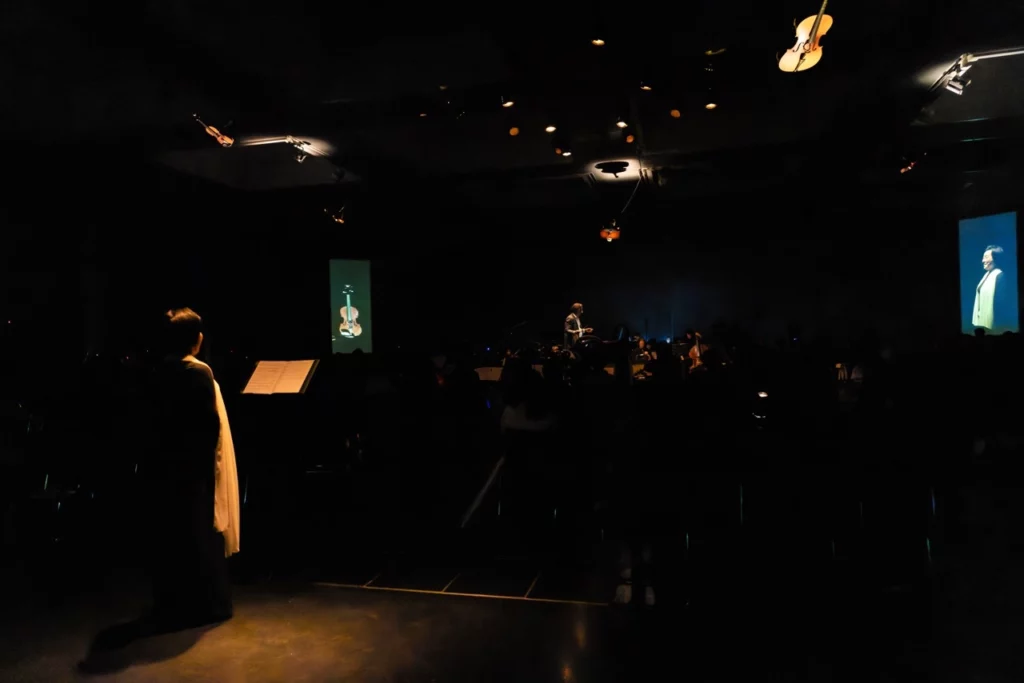
The Fifth Movement :
Physicists have long dreamed of the unification of the forces, and this movement brings it to life symbolically through music – each orchestra drawing on the music material of one of the fundamental forces.
The Quantum chorus (for the concert in Münster)
A special chorus dedicated to the unification of the fundamental forces was created and incorporated to the fifth movement for the concert in Münster to celebrate 100 years of Quantum Physics.
Escaping the subatomic scale, the music ascends to the human scale with the entrance of the choir. This final movement, enhanced by Chris Mosdell’s lyrics, evokes human interaction through a century of research and dreams — a reflection of humanity’s enduring hope for peace for the next 100 years.

